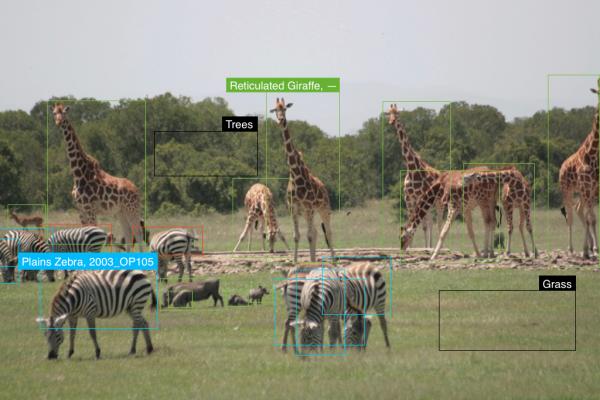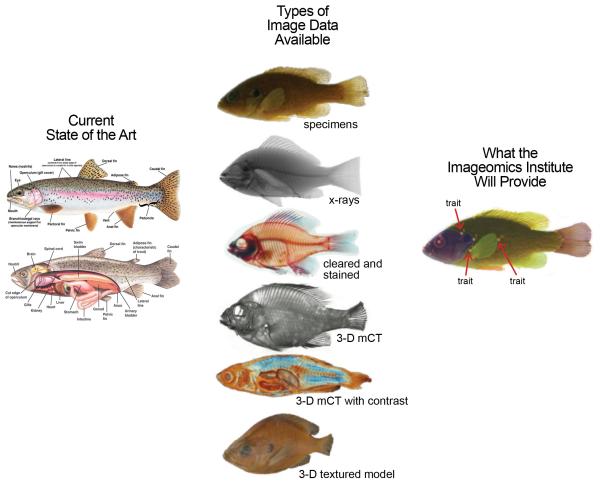TDAI faculty lead new NSF institute to establish field of imageomics

Picture this: Computerized image analysis to help understand evolution
The Ohio State University has been awarded a $15M grant from the National Science Foundation to lead the creation of a new, interdisciplinary institute and establish a new field of study that has the potential to transform biomedical, agricultural and basic biological sciences.
The new entity, which will be called the Imageomics Institute, is an inaugural institute for data-intensive discovery in science and engineering created by the NSF as part of its Harnessing the Data Revolution initiative. As such, the Imageomics Institute will be part of forming a national collaborative research network dedicated to computation-enabled discovery.
Led by faculty from Ohio State’s Translational Data Analytics Institute (TDAI), the Imageomics Institute will create this new field of imageomics in which scientists use images of living organisms as the basis for understanding biological processes of life on Earth.
“There are so many pictures of organisms with scientific value that we’ve never been able to analyze at the right scale,” said TDAI Director Dr. Tanya Berger-Wolf, principal investigator for the Imageomics Institute and professor of computer science and engineering; electrical and computer engineering; and ecology, evolution and organismal biology. “This will change how we are able to see and understand the natural world. Computers help humans ‘see’ images differently and expose what we may otherwise miss.”
Imageomics will utilize machine learning methodologies to extract from images—including photos and videos—biological traits such as the behavior or physical appearance of an individual, or even the distinguishing skeletal structure of a species.

Similar to genomics before it, which applied computation to the study of the human genome, imageomics will enable scientists extract meaning from natural image data using computer science. This ability will get scientists closer to answering compelling questions such as: Are a baby zebra’s stripes similar to its mother's and what might the genetic mechanism be for inheriting the pattern? How do the skulls of bat species vary with environmental conditions and what evolutionary adaptation drives that change? What subtle features distinguish closely related species of fish from each other and why?
The new institute will utilize existing images from a variety of sources around the world, including digital collections from museums, labs and the NSF-funded, Battelle-operated National Ecological Observatory Network (NEON), as well as photos taken by scientists in the field, camera traps, drones and even members of the public who have uploaded pictures to platforms such as eBird, iNaturalist and Wildbook.
“Imageomics is a truly visionary endeavor with incredible potential,” said Dr. Paula Mabee, NEON chief scientist and observatory director and a member of the Imageomics Institute’s core team.
Co-investigators for the Imageomics Institute:
- Dr. Henry L. Bart Jr., professor, Ecology and Evolutionary Biology, Tulane University
- Dr. Anuj Karpatne, assistant professor, Computer Science, and faculty at Sanghani Center for Artificial Intelligence and Data Analytics, Virginia Tech
- Dr. Hilmar Lapp, director of informatics, Duke Center for Genomics and Computational Biology, Duke University
- Dr. Charles Stewart, professor and department head, Computer Science, Rensselaer Polytechnic Institute
Senior personnel for the project:
- TDAI affiliate Dr. Bryan Carstens, Evolution, Ecology and Organismal Biology, The Ohio State University
- TDAI affiliate Dr. Wei-Lun Chao, Computer Science and Engineering, The Ohio State University
- TDAI affiliate Dr. Yu Su, Computer Science and Engineering, The Ohio State University
- Dr. Nico Franz, Life Sciences, Arizona State University
- Dr. Paula Mabee, National Ecological Observatory Network, Battelle Memorial Institute
- Dr. Daniel Rubenstein, Ecology and Evolutionary Biology, Princeton University
- Dr. Yasin Bakış, Museum of Natural History, Tulane University
- Dr. Wasila Dahdul, University of California – Irvine Libraries
- Dr. Jim Balhoff, Renaissance Computing Institute, University of North Carolina – Chapel Hill
- Dr. A. Murat Maga, University of Washington – Seattle Children’s Research Institute
- Dr. Leanna House, Statistics and Sanghani Center for Artificial Intelligence and Data Analytics, Virginia Tech
- Dr. Josef Uyeda, Biological Sciences, Virginia Tech
“It is exciting to be part of this team of scientists venturing into the uncharted space between our different disciplines, toward something completely new and different,” said Berger-Wolf. “It is everything that is great about interdisciplinary collaboration.”
